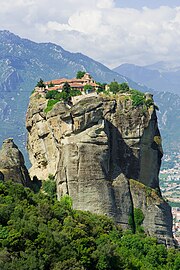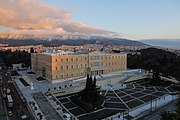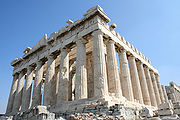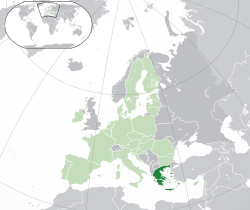
The official Statistical body of Greece is the National Statistical Service of Greece (NSSG). According to the NSSG, Greece's total population in 2001 was 10,964,020. That figure is divided into 5,427,682 males and 5,536,338 females. As statistics from 1971, 1981, and 2001 show, the Greek population has been aging the past several decades. The birth rate in 2003 stood 9.5 per 1,000 inhabitants (14.5 per 1,000 in 1981). At the same time the mortality rate increased slightly from 8.9 per 1,000 inhabitants in 1981 to 9.6 per 1,000 inhabitants in 2003. In 2001, 16.71% of the population were 65 years old and older, 68.12% between the ages of 15 and 64 years old, and 15.18% were 14 years old and younger.Greek society has also rapidly changed with the passage of time. Marriage rates kept falling from almost 71 per 1,000 inhabitants in 1981 until 2002, only to increase slightly in 2003 to 61 per 1,000 and then fall again to 51 in 2004. Divorce rates on the other hand, have seen an increase – from 191.2 per 1,000 marriages in 1991 to 239.5 per 1,000 marriages in 2004.Almost two-thirds of the Greek people live in urban areas. Greece's largest municipalities in 2001 were: Athens, Thessaloniki, Piraeus, Patras, Iraklio, Larissa, and Volos.
Throughout the 20th century, millions of Greeks migrated to the US, Australia, Canada, UK and Germany, creating a thriving Greek diaspora The migration trend however has now been reversed after the important improvements of the Greek economy since the 80's.
Immigration
Due to the complexity of Greek immigration policy, practices and data collection, truly reliable data on immigrant populations in Greece is difficult to gather and therefore subject to much speculation. In 1986, legal and unauthorized immigrants totaled approximately 90,000. A study from the Mediterranean Migration Observatory maintains that the 2001 Census from the NSSG recorded 762,191 persons residing in Greece without Greek citizenship, constituting around 7% of total population and that, of these, 48,560 were EU or EFTA nationals and 17,426 Cypriots with privileged status. People from the Balkan countries of Albania, Bulgaria, and Romania make up almost two-thirds of the total foreign population. Migrants from the former Soviet Union (Georgia, Russia, Ukraine, Moldava, etc.) comprise 10% of the total.
The greatest cluster of non-EU immigrant population is in the Municipality of Athens –some 132,000 immigrants, at 17% of local population. Thessaloniki is the second largest cluster, with 27,000, reaching 7% of local population. After this, the predominant areas of location are the big cities environs and the agricultural areas. At the same time, Albanians constituted some 56% of total immigrants, followed by Bulgarians (5%), Georgians (3%) and Romanians (3%). Americans, Cypriots, British and Germans appeared as sizeable foreign communities at around 2% each of total foreign population. The rest were around 690,000 persons of non-EU or non-homogeneis (of non-Greek heritage) status.
According to the same study, the foreign population (documented and undocumented) residing in Greece may in reality figure upwards to 8.5% or 10.3%, that is approximately meaning 1.15 million – if immigrants with homogeneis cards are accounted for.
Religion

The constitution of Greece recognizes the Greek Orthodox faith as the "prevailing" religion of the country, while guaranteeing freedom of religious belief for all. The Greek Government does not keep statistics on religious groups and censuses do not ask for religious affiliation. According to the State Department, an estimated 97% of Greek citizens identify themselves as Greek Orthodox.[51] However, in the Eurostat – Eurobarometer poll of 2005, 81% of Greek citizens responded that they believe there is a God, which was the third highest percentage among EU members behind only Malta and Cyprus.
Estimates of the recognized Muslim minority, which is mostly located in Thrace, range from 98,000 to 140,000,(between 0.9% and 1.2%) while the immigrant Muslim community numbers between 200,000 and 300,000. Albanian immigrants to Greece (approximately 700,000) are usually associated with the Muslim faith, although most are secular in orientation.[54] In the Treaty of Lausanne Greece and Turkey agreed to exchange minorities. About 500,000 people were expelled from Greece, predominantly Turks, but including other Muslim.Judaism has existed in Greece for more than 2,000 years. Sephardi Jews used to have a large presence in the city of Thessaloniki (by 1900, some 80,000, or more than half of the population, were Jews), but nowadays the Greek-Jewish community who survived the Holocaust is estimated to number around 5,500 people.
Greek members of Roman Catholic faith are estimated at 50,000 with the Roman Catholic immigrant community approximating 200,000. Old Calendarists account for 500,000 followers.[53] Protestants, including Greek Evangelical Church and Free Evangelical Churches, stand at about 30,000.[51][53] Assemblies of God, International Church of the Foursquare Gospel and other Pentecostal churches of the Greek Synod of Apostolic Church has 12,000 members. Independent Free Apostolic Church of Pentecost is the biggest Protestant denomination in Greece with 120 churches. There are not official statistics about Free Apostolic Church of Pentecost, but the Orthodox Church estimates the followers in 20,000.The Jehovah's Witnesses report having 28,243 active members There are also 653 Mormons, 501 Seventh-day Adventists,and 30 Free Methodists.
The ancient Greek religion has also reappeared as Hellenic Neopaganism, with estimates of approximately 2,000 adherents (comprising 0.02% of the general population).
Languages
Greece is today relatively homogeneous in linguistic terms, with a large majority of the native population using Greek as their first or only language. The Muslim minority in Thrace, which amounts to approximately 0.95% of the total population, consists of speakers of Turkish, Bulgarian (Pomak) and Romani. Romani is also spoken by Christian Roma in other parts of the country.
Further minority languages have traditionally been spoken by regional population groups in various parts of the country. Their use has decreased radically in the course of the 20th century through assimilation with the Greek-speaking majority. This goes for the Arvanites, an Albanian-speaking group mostly located in the rural areas around the capital Athens, and for the Aromanians and Moglenites, also known as Vlachs, whose language is closely related to Romanian and who used to live scattered across several areas of mountaneous central Greece. Members of these groups ethnically identify as Greeks and are today all at least bilingual in Greek. In many areas their traditional languages are today only maintained by the older generations and are on the verge of extinction.
Near the northern Greek borders there are also some Slavic-speaking groups, whose members identify ethnically as Greeks in their majority. Their dialects can be linguistically classified as forms of either Macedonian (locally called Slavomacedonian or simply Slavic), or Bulgarian (distinguished as Pomak in the case of the Bulgarophone Muslims of Thrace.
The Jewish community in Greece traditionally spoke Ladino (Judeo-Spanish), today maintained only by a small group of a few thousand speakers.
Among the Greek-speaking population, speakers of the distinctive Pontic dialect came to Greece from Asia Minor after the Greek genocide and constitute a sizable group.
















